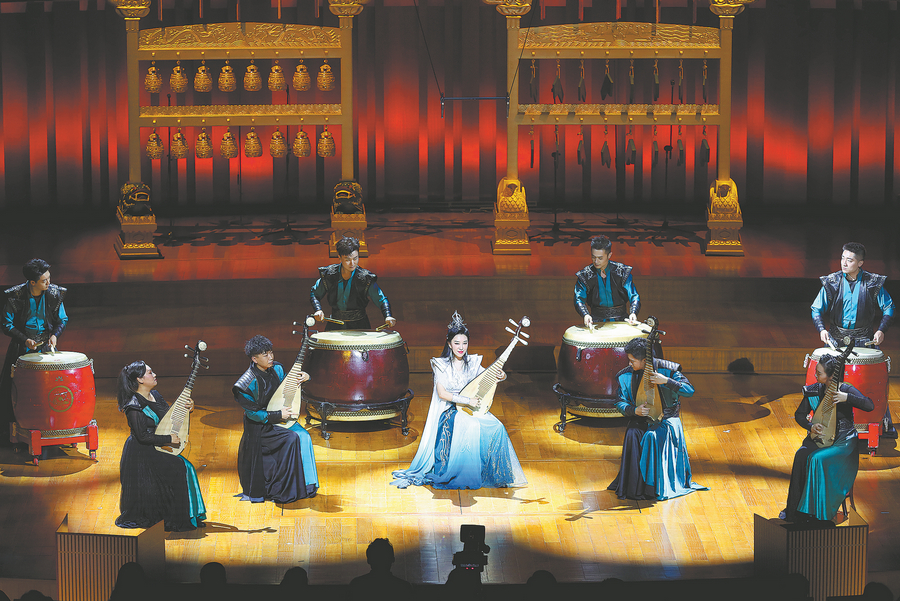

A fresh take on old rites and music steeped the Dragon Boat Festival in the sights and sounds of tradition at the NCPA, Chen Nan reports.
For a moment, the concert hall of the National Centre for the Performing Arts, where works by Western composers such as Beethoven and Mozart are usually performed, was transformed into an imperial palace of ancient China.
Twelve yellow bronze bells were hung on the back of the stage. Two traditional Chinese-style folding screens stood on the sides of the stage.
Musicians clad in traditional Chinese clothes came onto the stage playing various musical instruments, such as Chinese drums, bamboo flutes, sheng (Chinese free reed wind instrument) and guqin (the seven-stringed Chinese zither), that originated centuries ago.
On June 21 and 22, the China National Traditional Orchestra, under the baton of conductor Liu Sha, performed two concerts at the NCPA titled Ode to Huangzhong Dalyu.
Huangzhong and Dalyu are the names fort two relative pitches of the 12 fundamental pitches of Chinese music, also known as the 12 laws of music, which are used for tuning purposes. It's closely related to liyue, or rites and music, a vital part of Chinese traditional culture, as recorded in the Confucian classic The Book of Rites which writes: "Music is an echo of the harmony between heaven and the Earth; rites or ceremonies reflect the orderly distinctions in the operations of heaven and the Earth".
In olden days, rites and music were believed to be essential for maintaining a harmonious and orderly society. They were prominent in big ceremonies and sacrifices.